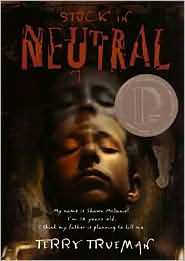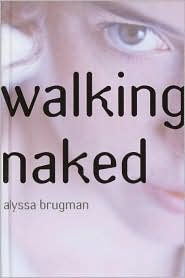
Author: Barbara Haworth-Attard
ISBN: 978-0-8050-7790-2
Publisher: Henry Holt and Company, LLC
Copyright: 2003
Plot Summary: Theories of Relativity tells of the teenaged Dylan struggling to survive on the streets without taking the easy way out: joining Vulture and his gang of enforcers, drug-users, and prostitutes. His mother, who haphazardly cared for them, threw him out in order to please her latest boyfriend, a rich man who buys Dylan's brother's a Christmas tree and presents. To stay sane between begging outside an office building, Dylan talks to a newly homeless teen Jenna and also to Twitch, who cannot stand still and cannot break his drug addiction. He also befriends Glen, an office worker who doesn't give him money but buys him a hotdog now and again. Dylan's only sanctuaries are the library, where he reads Einstein, the doughnut house, and the youth center. Soon, Jenna falls prey to Vulture and starts working the streets despite Dylan trying to not only free himself from this situation, but to take her with him.
Critical Evaluation: Theories of Relativity is a heart wrenching tale of a homeless teen who does not try to dramatize his situation or asks for the readers' pity. Dylan as narrator shows his resilience despite his almost ever-present hunger and his rejection of the darker side of homeless life, through his refusal to take a street name or to join in with Vulture and his gang. Dylan's analysis of Vulture and how he works shows how Vulture preys on the newly homeless and does them favor in order to make them indebted. Throughout the novel, Dylan refuses all but a few presents, taking those from Jenna and Glen, because he is afraid of becoming indebted to anyone. The plot regarding Dylan's final encounters with Vulture was a welcomed twist and would shock most readers, especially because of Jenna's involvement. The foreshadowing of the ending of the book was done from the very beginning through Dylan's steadfast love of his brothers, his strong belief in himself, and his refusal to compromise his beliefs.
Reader's Annotation: Living on the streets because his mother kicked him out of the house, Dylan struggles to eat and avoid the roving street predators owned by Vulture. Only his encounters with Jenna, a new street kid, brightens his life even as she drags him further into the gritty and ruthless life of a homeless teen.
Information About the Author: Barbara Haworth-Attard is a Canadian born and raised author who lives in London, Ontario. She has been writing since 1995 and is a prolific children's and young adult author.
Haworth-Attard focuses on the many different struggles of growing up, from homelessness to troubles faced by historical teens. Read more about the author at her website.
Genre: Homeless teenagers; Fiction; Street Life
Curriculum Ties: National Hunger and Homelessness Awareness Month (November)
Booktalking Ideas:
- How does Dylan deal with living on the streets? How does his use of theories and his refusal to take a street name, along with depending on Vulture, keep him separate from his potential friends as well as keep him sane?
- Focus on the relationship between Dylan and Amber and how it changes throughout the book. Compare it to his feelings for Jenna.
Reading Level: 16+
Challenge Issues:
- The drug use and violence within this book should not condone it to being banned, as it depicts how devastating life on the streets can be for people, let alone teens.
Why This Book?: CLA Book of the Year Award
Reference Page:
Haworth-Attard, B. (2003). Theories of Relativity. New York: Henry Holt and Company, LLC.















